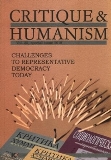The Central City Square as a Legitimation Resource: The Main Square of Socialist Sofia
The Central City Square as a Legitimation Resource: The Main Square of Socialist Sofia
Author(s): Elitsa StanoevaSubject(s): Social Sciences
Published by: Фондация за хуманитарни и социални изследвания - София
Keywords: city square; legitimation resource; socialist Sofia; socialism; legitimizing symbol; ideology
Summary/Abstract: This paper analyzes one monumental city square in Sofia (Alexander I, later Ninth of September) as one of the key components in the (re)arrangement of the central urban space after the advent of socialism in Bulgaria in 1944. Though focused on the socialist period, the research outlines also the development of the site as a palatial square in the previous monarchic period as a plane of historical comparison. The analysis treats the square not merely as an artifact of urban planning but rather as a stage and a frame – and hence, a legitimizing symbol – of a historically particular political culture (state socialism), as a material manifestation of its ideology and a physical field of its public rituals. Therefore, the research scope is not limited to the square itself but covers also the urban development of its wider spatial context, the political centre of Sofia, and the architectonic structures around which public dynamics in the city centre gravitated spatially and symbolically. In regard to the architectural implementations in this fragment of the city space, the highlight is the Mausoleum of Georgi Dimitrov and special significance is placed on the spatial tension and ideological opposition between the mausoleum and the former royal palace as a manifestation of the clash between two antagonistic political regimes (monarchy and people’s republic). Since the analyzed urban topoi were constitutive elements of the governmental centre of Sofia, the central urban space delineated by them is perceived as a visualization of power, and the architectural projects for its reconstruction – as expert solutions of a task that had primarily political importance rather than as autonomous creative ideas.
Journal: Критика и хуманизъм
- Issue Year: 2010
- Issue No: 35
- Page Range: 285-320
- Page Count: 36
- Language: English
- Content File-PDF

